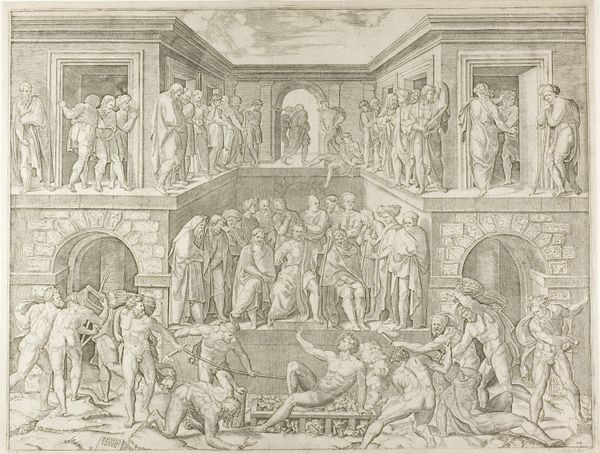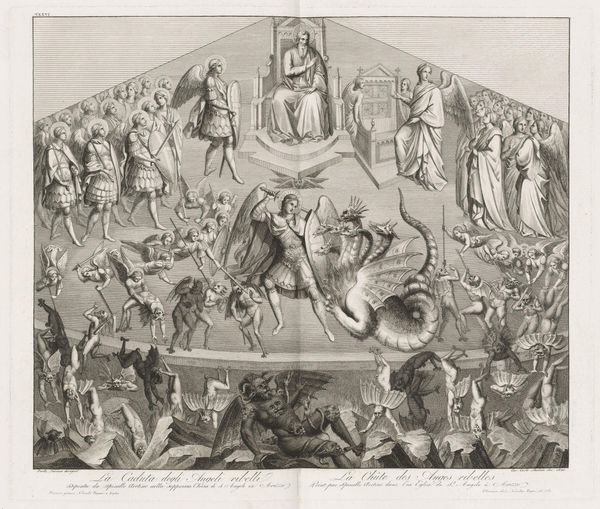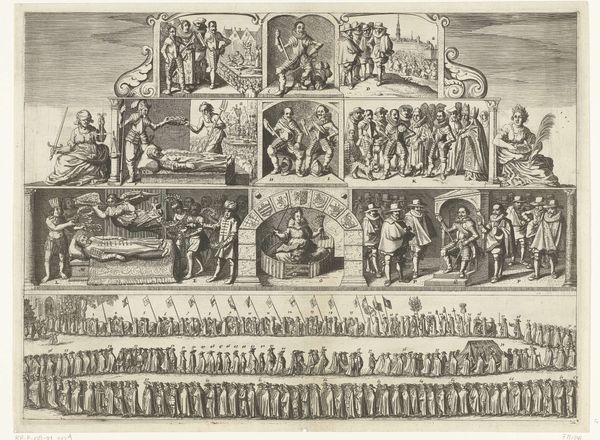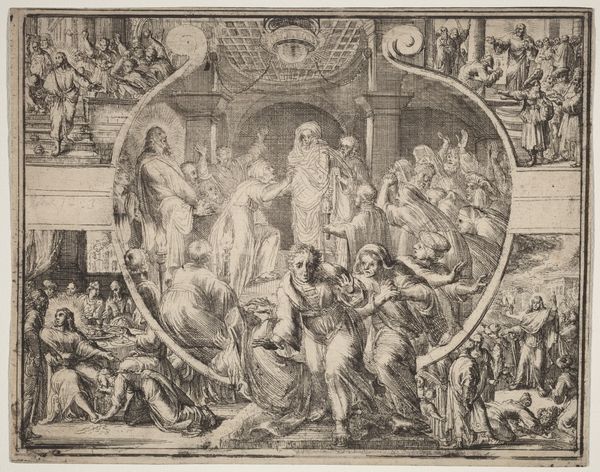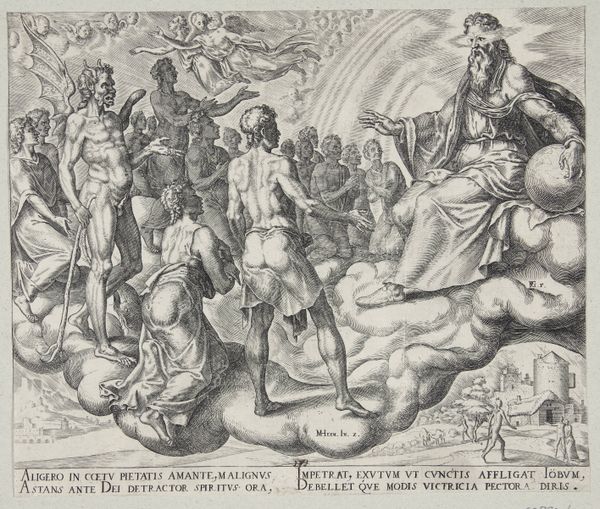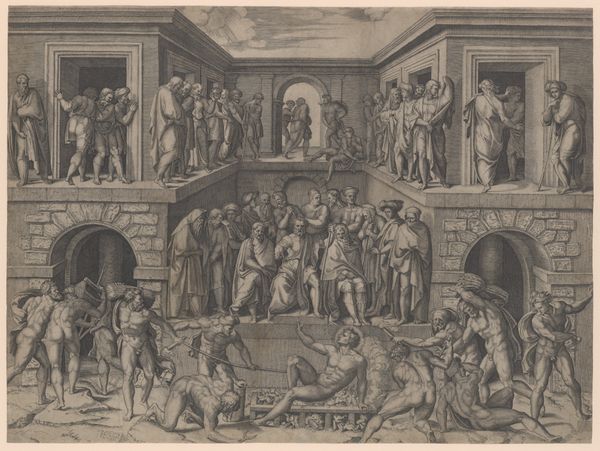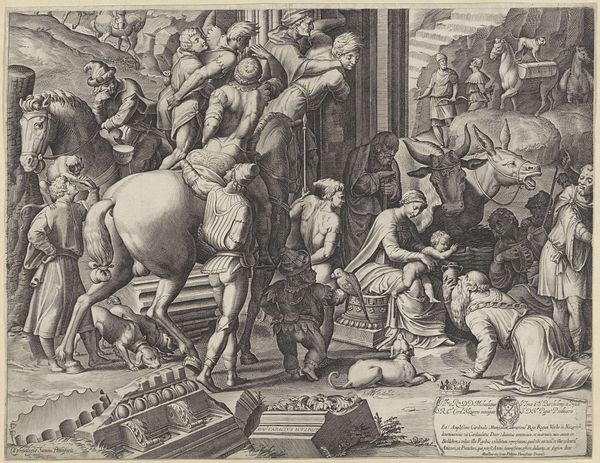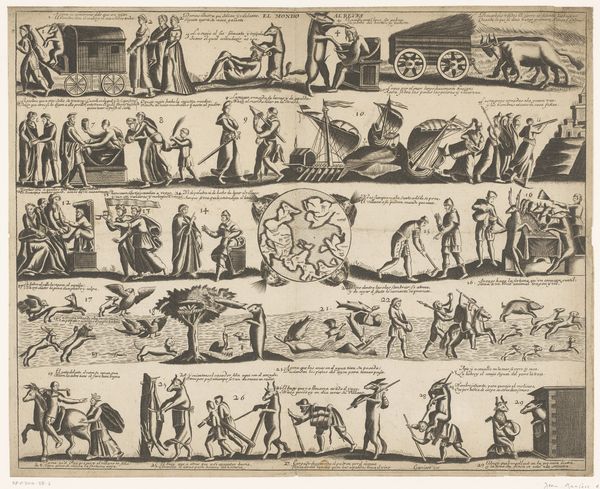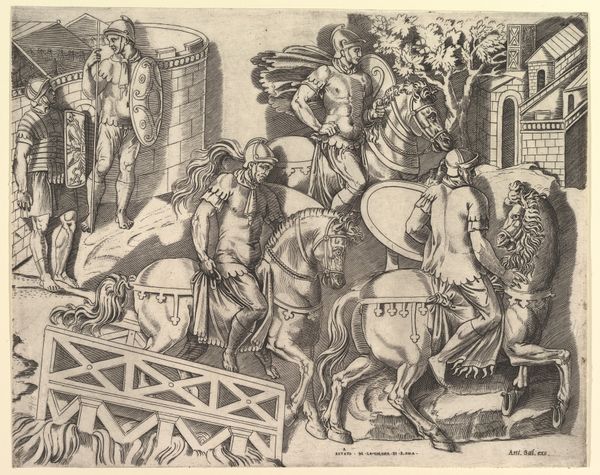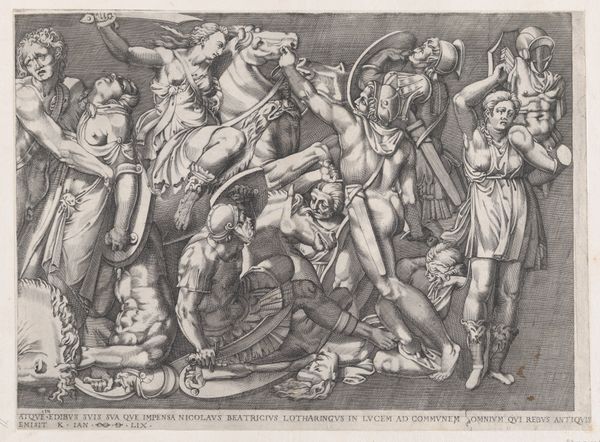
The Roman antiquities, t. 2, Plate XXXIV. Grand marble urn believed to Alexander Severus and his mother Julia Mamea (figures carved from Barbault). 1756
0:00
0:00
print, engraving
#
portrait
# print
#
greek-and-roman-art
#
landscape
#
figuration
#
roman-mythology
#
ancient-mediterranean
#
history-painting
#
nude
#
engraving
Copyright: Public domain
Editor: Here we have Giovanni Battista Piranesi's 1756 engraving, "The Roman Antiquities." It depicts a grand marble urn with scenes carved in relief. What strikes me is the sheer labor involved in not just creating the original urn, but also in Piranesi's meticulous rendering of it. What stands out to you? Curator: The reproduction of antiquity becomes, in Piranesi's hands, a commodity itself. Consider the print medium: multiple copies, easily disseminated, potentially influencing taste and stimulating demand for "antique" goods. Look at the obsessive detail – the rendering of every fissure and imperfection. Does this hyperrealism not speak to a fascination with materiality? The marble itself, quarried, carved, transported… it's all implicated. Editor: So, you're saying that the print itself participates in a kind of consumption, mimicking and amplifying the original object's journey through production and trade? Curator: Exactly! And by focusing our attention on the textures, the presumed "authenticity" of the urn is further emphasized by the labor put into Piranesi's print making. Do you notice how the various classical themes that seem to adorn the original become more ornamental through their copy? Editor: I do, that’s really interesting. It gives you pause about the value and labour of artwork at the time. It almost feels like this process reveals an act of mass consumption masked as classic antiquity. Curator: Indeed! The very act of documenting transforms the original, doesn't it? Something to consider moving forward.
Comments
No comments
Be the first to comment and join the conversation on the ultimate creative platform.
